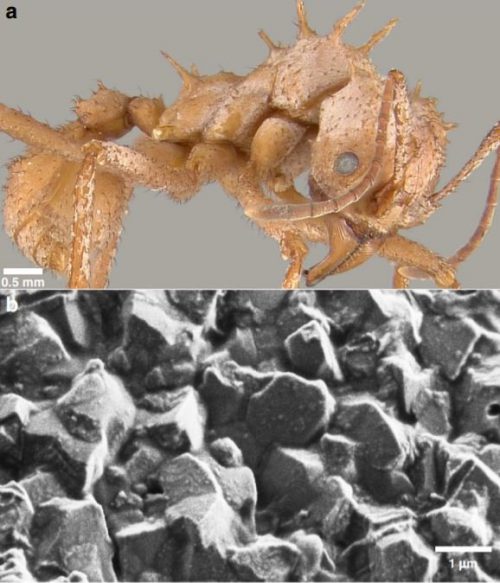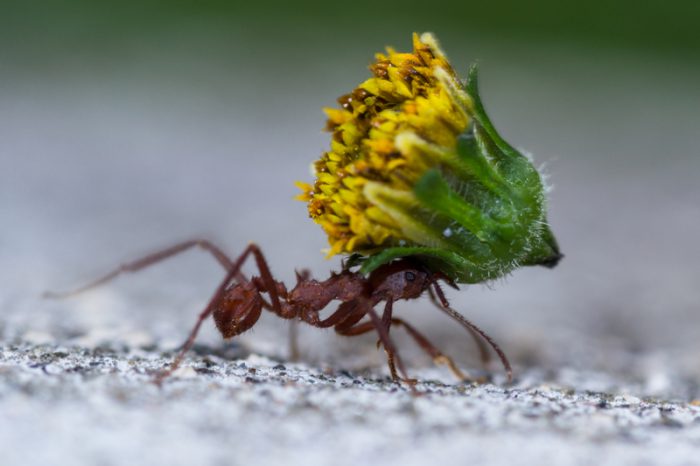Ants are already a favourite animal for scientists to study. Not only do they possess amazing strength relative to their tiny bodies, they also work together in complex social groups that are unusual in the animal world. And now we can add another very cool feature to the ant's arsenal.
A leaf-cutter ant species known as Acromyrmex grow armour. Biomineral armour.
According to a new study, this protective coating—made of rhombohedral magnesium calcite crystals (sounds fancy!)—is a thin, but effective layer that strengthens the insect's exoskeleton. It also proects them against pathogens, or disease.
And to our knowledge, it is utterly unique in the insect world.
How do they get it?

(Top) An Acromyrmex ant up close, showing off its gnarly armour. (Below) A super zoomed in image, revealing the crystals found inside this coating. (Li et al., Nature Communications, 2020)
First off. How is such a coating made? According to research, the leaf-cutters are not born with this biomineral armour. Instead, the coating grows as they mature, or get older. Under a electron microscope, the armour looks like a bunch of rocks glued together into a hard, uneven sheet.
As for exactly how the ants evolved to have this armour, well, that's a tougher question. The scientists are unsure about this, though it is true that other animals, like certain crustaceans, have a biomineral armour coating. As for why they have it, the answer is much clearer.
How does it perform?
Battles over territory are fairly common between different ants species. And leaf-cutter ants are not especially large ants. That would put them at a bit of a disadvantage in a fight. Except for their armour, that is.
Researchers found that compared to other ants their size, the Acromyrmex ants were much more likely to survive battles, and with fewer injuries. That's a big win for the health of their colony.
And speaking of colonies, leaf-cutters have some of the biggest in the animal kingdom, with literally millions of ants calling the same place home. In large, densely populated animal groups like this, pathogens—a.k.a. germs—are a real problem. Think of these like an ant flu—or a bug bug! Because all of the animals live so close together, a contagious disease can spread quickly and devastatingly.
But again, studies show that the armour seems to help the insects survive at a much higher rate.
In fact, the armour is so useful that scientists believe that there are probably other insects out there that use it—we just haven't discovered them yet. An undiscovered world of armoured bugs? That sounds amazing!
 Leaf-cutter ants are more than just strong for their size. Their exoskeleton is strong, too. (Photo
Leaf-cutter ants are more than just strong for their size. Their exoskeleton is strong, too. (Photo 









This is so cool I love ants, I have a ant farm.
Many times I will step on an ant and think I have killed it….but amazingly it uncurls or unsmashes and within a couple of minutes I see it dragging itself away!! I wonder if we could recreate this “amour” for human use in spinal or neck injuries??